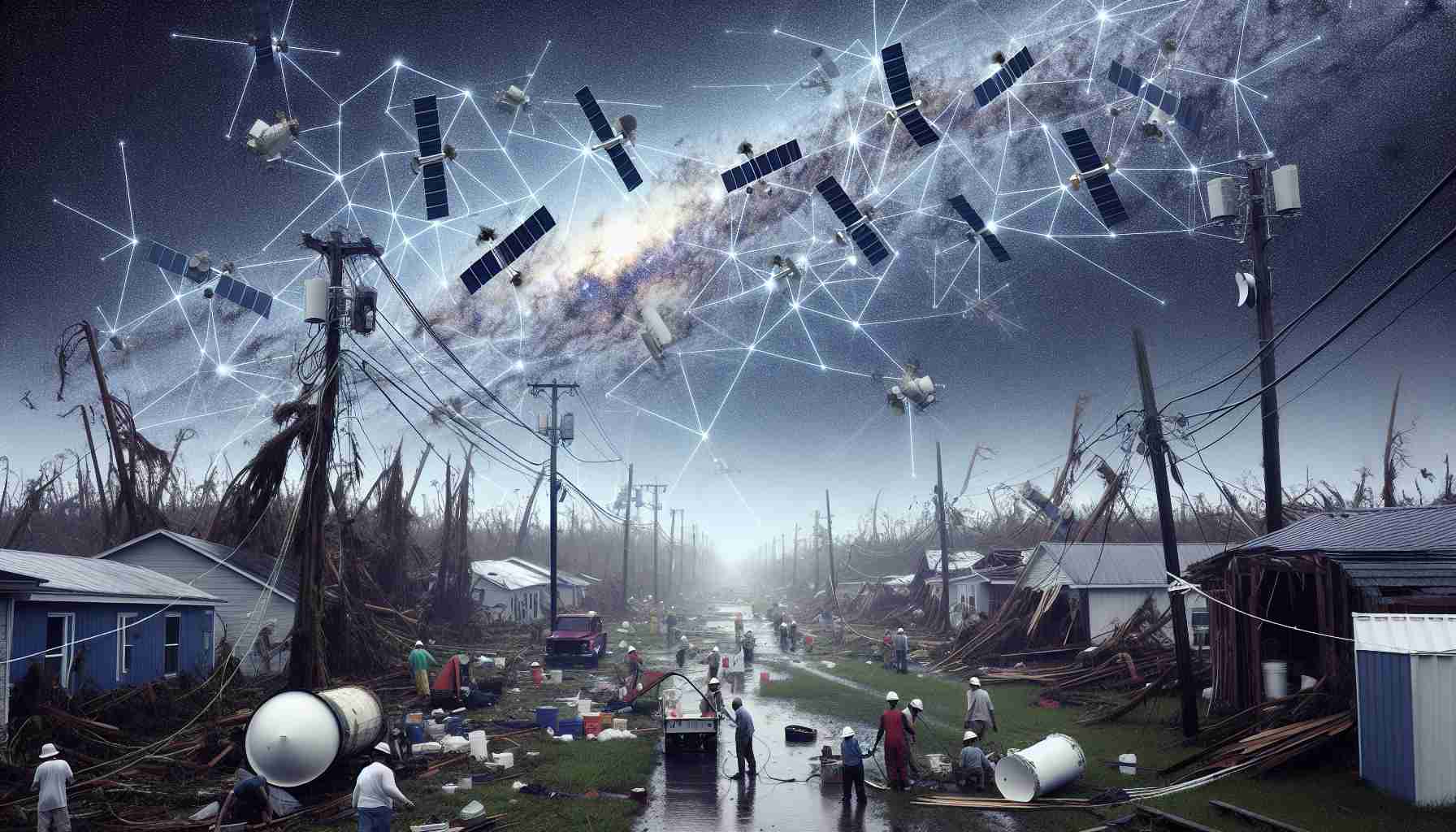
Starlink, the satellite internet service launched by Elon Musk’s SpaceX, aims to provide connectivity in areas lacking traditional internet infrastructure. After Hurricane Helene struck on September 26, leaving devastation in its wake, many residents were left without internet, power, or communication. The hurricane, which made landfall as a Category 4 storm, caused significant damage, uprooting homes and claiming over 200 lives.
Elon Musk recently sparked controversy by suggesting that the Federal Emergency Management Agency (FEMA) hampered efforts to deliver Starlink units to the victims of Hurricane Helene. This assertion raised questions about the agency’s role in disaster response and the deployment of satellite internet technology in crisis situations.
In response, officials clarified that FEMA did not obstruct the delivery of Starlink equipment. Both federal and state agencies confirmed that the technology was successfully deployed where it was most needed. The confusion arose from a few logistical challenges faced by delivery pilots and not from any formal airspace closures by the Federal Aviation Administration (FAA).
Transportation Secretary Pete Buttigieg addressed the situation by stating that the regulations were not the issue and emphasized that proper communication resolved the delivery challenges. Ultimately, Starlink continued its mission to provide essential connectivity to those affected by the hurricane, proving invaluable in times of crisis.
Starlink’s Initiatives Following Hurricane Helene: A Deeper Dive
In the aftermath of Hurricane Helene, which wreaked havoc on September 26, attention has turned to the role of Starlink in providing vital connectivity to affected communities. While previous discussions primarily focused on logistical challenges and the controversy involving FEMA, there are additional facets worth exploring regarding Starlink’s contributions and the broader implications for disaster response.
Key Questions and Answers
1. What specific actions did Starlink take to assist hurricane victims?
Starlink rapidly deployed satellite kits to areas in dire need of communication. The service established temporary connectivity hubs that allowed residents to access the internet for emergency services, family communication, and vital information dissemination.
2. How did Starlink manage to provide service despite infrastructure damage?
Starlink’s satellite-based technology is inherently more resilient than traditional internet infrastructure. Its low Earth orbit satellites enable direct communication that does not rely on ground-based networks, thus ensuring service continuity in disaster-stricken areas.
3. What impact did Starlink have on local recovery efforts?
The ability for those affected by the hurricane to communicate via Starlink was crucial for coordinating relief efforts and accessing necessary resources. The service played a pivotal role in connecting local authorities with residents, providing updates on recovery initiatives.
Challenges and Controversies
Despite its advantages, Starlink’s operations post-Hurricane Helene were not without hurdles:
– Logistical Challenges: While delivery of equipment was ultimately successful, the initial confusion around airspace restrictions highlighted the need for better coordination among agencies in future disaster responses.
– Public Perception: Elon Musk’s contentious statements regarding FEMA may have overshadowed the positive impact of Starlink’s efforts, leading to public misunderstandings about agency roles and responsibilities during crises.
– Dependence on Technology: While Starlink offers a robust alternative to traditional internet, over-reliance on satellite connectivity may not be sustainable for extended periods, especially if significant infrastructural repairs are needed.
Advantages and Disadvantages
Advantages:
– Rapid Deployment: Starlink can be deployed quickly compared to traditional communication infrastructure, making it ideal for rapid disaster response.
– Outreach Capability: The service provides connectivity in remote and rural areas that may be hard-hit by disasters and often neglected in recovery plans.
– User-Friendly Services: Starlink’s equipment is designed for ease of setup, allowing non-technical individuals to access services with minimal support.
Disadvantages:
– High Initial Costs: The equipment required to set up a Starlink connection may be a financial burden for some individuals or families recovering from disaster.
– Signal Reliability: Although largely effective, satellite signals may experience interruptions during severe weather conditions, potentially compromising communication when it’s needed most.
Looking Forward
As recovery from Hurricane Helene continues, the need for resilient communication networks will be a focal point of discussions among policymakers and technology providers. Starlink’s role in hurricane aftermath raises important questions about the integration of satellite technology into disaster recovery frameworks, and how best to leverage these tools for future emergencies.
For further insights into Starlink’s initiatives and satellite internet technology, visit Starlink.



